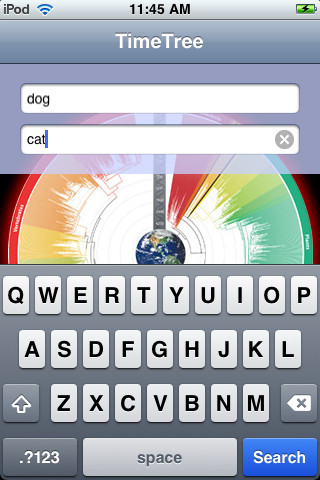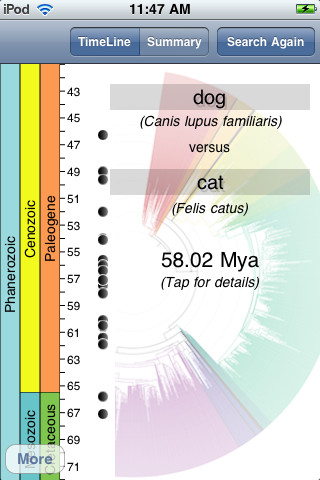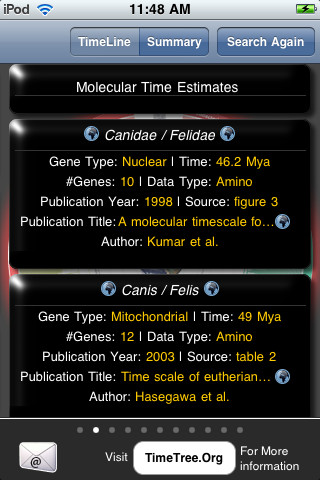Waiting for Evolution Day 2012 celebrations at the Museo Civico di Storia Naturale di Milano on February 10th, 11th and 12th (live streaming on Scienza in rete), it is easy and fun play with TimeTree.
TimeTree is a public knowledge-base for information on the evolutionary timescale of life. This app allows easy exploration of the thousands of divergence times among organisms in the scientific literature. A tree-based (hierarchical) system is used to identify all published molecular time estimates bearing on the divergence of 2 chosen organisms, such as species, compute summary statistics, and present the results. Names of 2 taxa to be compared are entered in the search window and the results are presented on a set of self-explanatory tabs.
For example: the distance between human (Homo sapiens) and ants (formica) is 782.7 milions of years!
TimeTree database version 3.0 was released September 27, 2011 with new data from 1209 studies including 25342 time nodes.
It is possible to send PDFs or at least citations for any studies not included in the database at submissions@timetree.org
TimeTree is directed by Blair Hedges (Pennsylvania State University) and Sudhir Kumar (Arizona State University). The project has been supported, in part, by grants from the National Science Foundation, National Institutes of Health, NASA Astrobiology Institute, and Science Foundation of Arizona.
The app is compatible with Apple and Android.
It is of course possibile to do the same search using the TimeTree website.
On the web site you can download also part of the book "The Timetree of Life" (S. Blair Hedges and Sudhir Kumar) and nice posters.
TimeTree: A public knowledge-base of divergence times among organisms. Bioinformatics 22: 2971-2972
Video tutorial and previews of the app:







